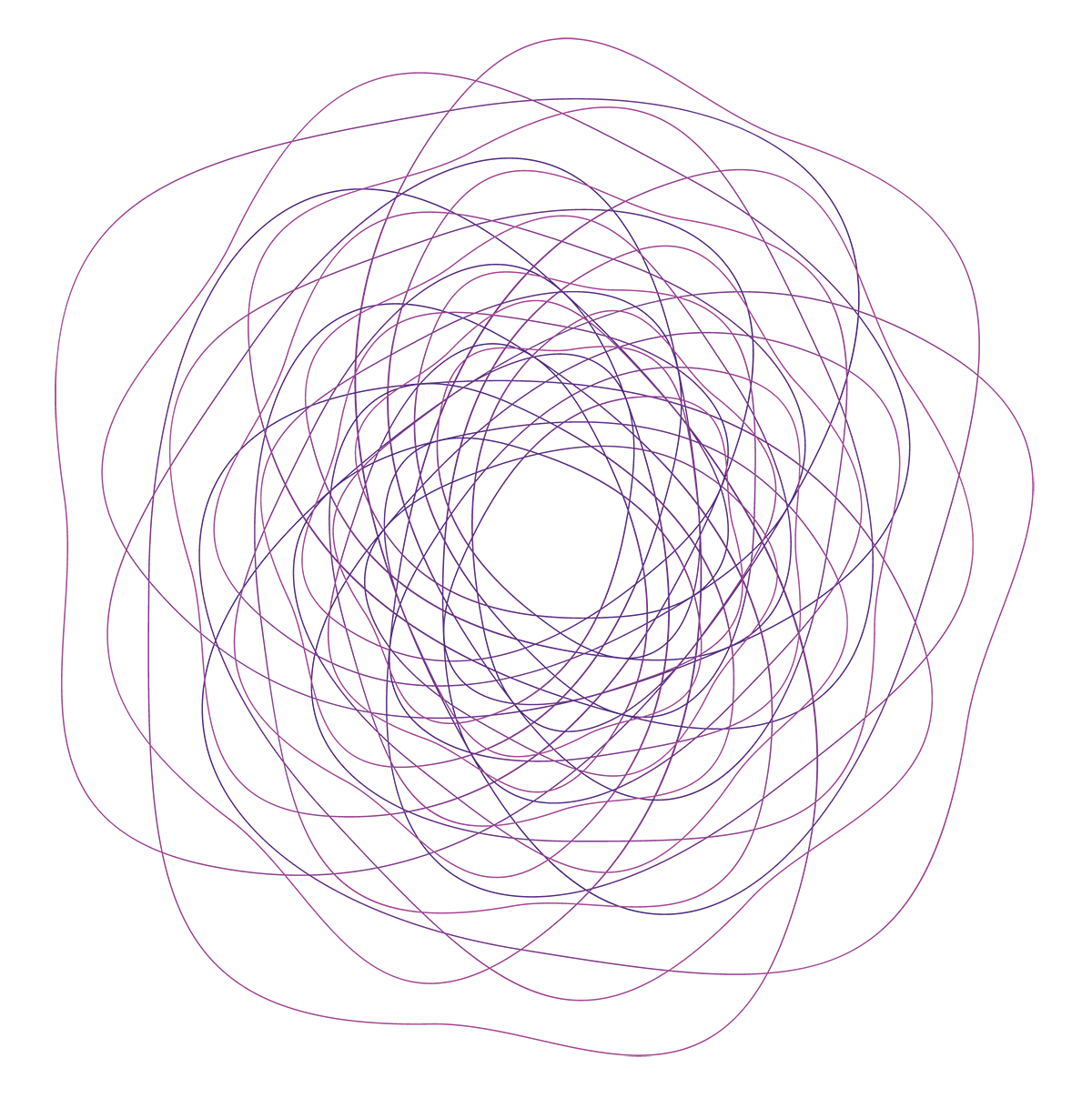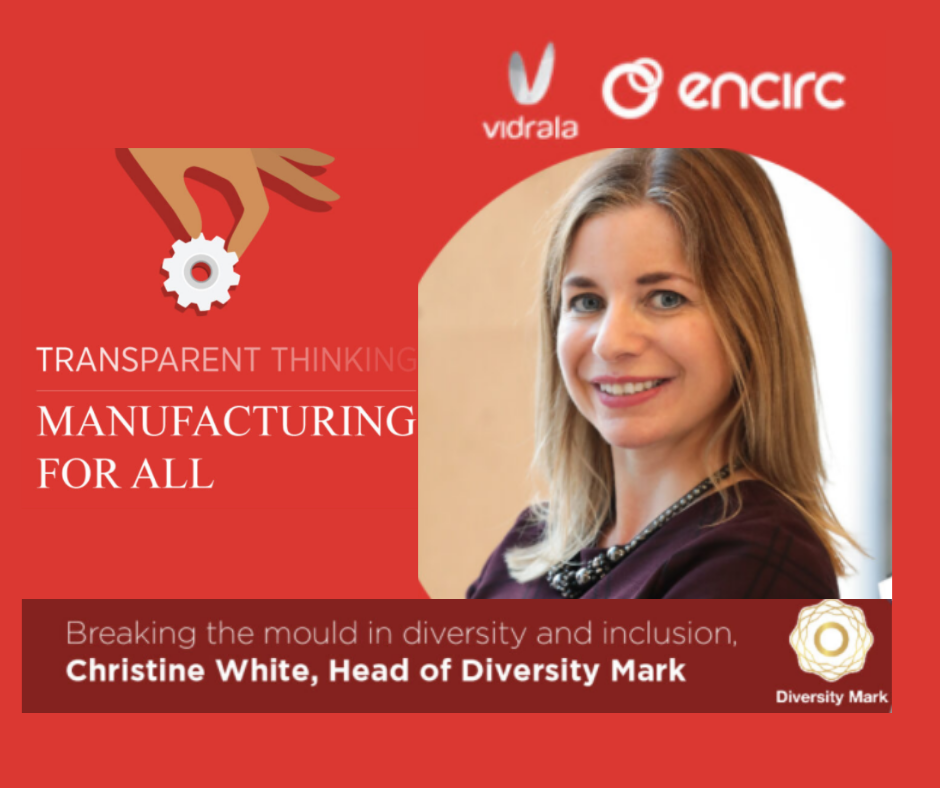Making progress in manufacturing can’t be focused purely around improving technology, it must also be grounded in creating progressive cultures that breed opportunities for everyone, regardless of their demographic or background.
As many businesses around the world recognise the benefits that come with incorporating inclusive and diverse working processes, a large proportion are unsure where to even begin. How can they enact widespread changes in long-standing behaviour throughout their organisation, in a way which is both enduring and effective?

Christine White, our Head of Business talks with Encirc for Transparent Thinking – their new insight-led content series, which will uncover and confront the biggest issues facing the global manufacturing and beverages sectors. Christine shares her expert insight around the important first steps which those responsible must take to instil futureproofed values.
One of the biggest dangers facing the world of employment today is that companies and senior leaders see diversity as being only a tick-box exercise. This isn’t what embracing diversity and inclusion is all about. It must be about creating a positive and more meaningful culture. This takes a lot of hard work and commitment, but doing it properly also brings with it real rewards and will pay dividends if it goes beyond just lip service.
A compelling business case
There is a huge difference between organisations with senior level buy in and those that do not really understand the true value of diversity and inclusion. For example:
Organisation A treats Diversity and Inclusion as a single initiative owned exclusively by HR, they think it is the right thing to do but it’s seen as more of a tick box exercise that they sometimes pay lip service to every now and then. Employees, therefore, also see it as a tick-box exercise with no authenticity.
Organisation B however, sees it as a growth enabler and the key to every decision within the organisation. Every individual leader is bought into the value of belonging, both intellectually and emotionally. Leaders are authentic and visible champions for Equality, Diversity, and Inclusion and they are equipped to be able to explain why they care, why it matters, and why it should matter to their direct reports and colleagues.
The business case for inclusivity and diversity has been clearly made over time and is backed up by numerous academic studies which have shown that companies with greater diversity perform much better and have significantly lower staff turnover rates as well as increased innovation. McKinsey & Company found that companies in the top quartile for Gender Diversity on executive teams are 25% more likely to have above average profitability. Harvard Business Review reported in 2020 if we act now to advance gender equality this could add $13 trillion to the global GDP by 2030.
Understanding the barriers
Analysis of data is key because you can not change what you can’t see, feel, hear, understand or quantify. Auditing the system and achieving systemic change requires quantitative and qualitative data and this should be measured regularly. At Diversity Mark we provide a framework for organisations which assists with this important step. This data should be reviewed with a key team of stakeholders. The most important stakeholder is the wider workforce, especially underrepresented groups. This vital exercise should assist in identifying any potential barriers to women or underrepresented groups, which can then be acted on accordingly.
Creating an Equality, Diversity, and Inclusion Strategy
The aim of this activity would be to have a living document which outlines the values, principles, and goals of the business when it comes to Diversity and Inclusion.
An effective Equality, Diversity and Inclusion strategy should include how Diversity and Inclusion links to the company’s values, core operating model and growth strategy and it should be easy to communicate.
Companies are becoming increasingly aware of how important it is to create an inclusive employer brand. Glassdoor found that 67% of candidates said that diversity in an organisation is an important factor when considering a job offer, so it is imperative to make a statement and make your diversity goals and strategy visible both internally and externally.
Working Groups can also be invaluable when planning or implementing change, starting or reviewing your diversity journey, or enabling you to really hear staff views in relation to a particular issue.
Being involved in a diversity working group can be an excellent development opportunity for individuals, as they can take ownership of tasks whilst spreading the workload – rather than a couple of individuals in HR trying to drive change.
Encirc, for example, were able to establish their first internal Women’s Network, which now supports and champions gender equality across the business. Three projects were developed by the original committee; the first of which focused on championing gender diversity in the workplace.
Developing a positive culture for employees
If you attract the best people into your organisation – will they stay? Do team members feel they will score extra points if they work excessive hours, answer emails at weekends and evenings and wear their burnout badge with honour? If the answer is yes, then you are unlikely to retain top talent, especially women and working families.
Culture comes from the top, and managers should lead by example here. If you can make kindness, compassion, and trust central features of your culture you will attract the best people and retain your top talent. Culture audits, anonymous surveys and exit interviews can be helpful and will give you benchmarks to improve on. If you are in constant listening mode with your employees, employee satisfaction will increase, and turnover will reduce.
Building a diverse pipeline for the future.
Many of the STEM and manufacturing organisations on board with Diversity Mark, such as Encirc, are trying to attract more females and have initiatives around reaching out into the community. For example, outreach to girls’ schools could include offering work experience opportunities, offering work related project opportunities, providing a sponsored prize for a manufacturing or STEM related project, and engagement with local primary schools using female role models to emphasise at an early stage that manufacturing, and STEM careers are for girls and boys.
Talent mapping is a vital process in identifying the capabilities, experience and potential of current employees and aligning this with your growth strategy to reveal talent gaps and development needs. It helps to identify the stars within your organisation, and you can work on their personal development to get them ready to participate at senior levels when the time comes, whilst retaining them.
Job seekers and young people want to know what you are doing to increase diversity and inclusion in your company, which is a big reason to improve your recruitment practices. Editing job description language thoughtfully and use of gender-neutral language, along with blind shortlisting and diverse interview panels, can help in reducing the risk of unconscious bias. In the case of Encirc, the company launched a Diversity Charter in 2019, which outlined its commitments in line with the above, to ensure a fair and balanced recruitment process. Find out more here.





